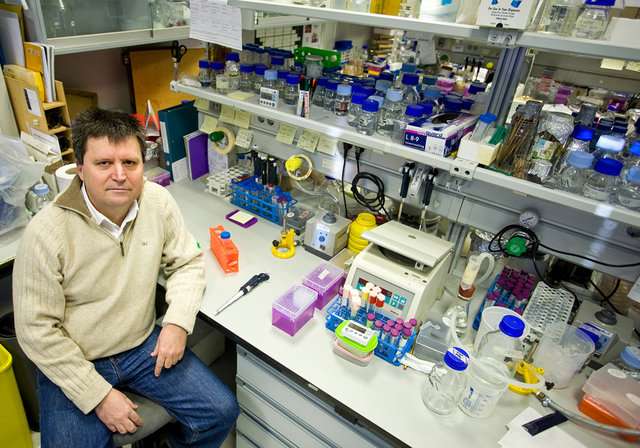Team discovers new mechanisms for DNA stability

Researchers from the University of Seville at the Andalusian Centre for Molecular Biology and Regenerative Medicine have discovered that in eukaryotic cells, the proximity of the genes to the pores in the nuclear membrane contributes to maintaining the integrity of the genome. This is due to the fact that the anchoring of DNA to the pore during transcription avoids the formation of DNA-RNA hybrids, which are a natural source of DNA breaks and genome instability.
The proximity and anchoring of the genes to the nuclear pores during transcription has been known for more than a decade. It enables the nascent RNA to be carried out of the nucleus. "In this work, we have seen that if DNA is located in the interior of the nucleus and removed from the nuclear pore, the formation of DNA-RNA hybrids are more likely. That is to say, the anchoring of DNA to the pore contributes to preserving the integrity of the genome by avoiding the formation of these structures," explains Professor Andrés Aguilera.
The work was carried out on a model eukaryotic organism, the yeast Saccharomyces. The researchers counted new genes involved in the prevention of DNA-RNA hybrids, which cause genetic instability. From one collection of mutations of protein-coding genes, they identified the nuclear components Mlp1 and Mlp2 of the macrocomplex that form the nuclear pores, preserved in all eukaryotes, including humans. The molecular analysis of the null mutations (those that are totally non-functioning) of these genes revealed that DNA-RNA hybrids accumulated and increased the genetic instability that they caused. However, when the DNA in these mutations was again returned to the nuclear pore by means of a genetically engineered artificial anchoring system, the hybrids and the instability were suppressed.
"It was particularly relevant that this system of artificial anchoring was also tested in THO-complex mutations, which also see increased DNA-RNA hybrids and the associated genetic instability, and we successfully managed to prevent the formation of DNA-RNA hybrids and instability," Aguilera said.
The accumulation of RNA-DNA hybrids in the genome is a source of genome instability in all organisms and has been associated with neurodegenerative diseases and cancer. The results of the research open new possibilities for understanding the cellular mechanisms responsible for genome instability and for being able to explore new therapeutic approaches.
More information: Francisco García-Benítez et al, Physical proximity of chromatin to nuclear pores prevents harmful R loop accumulation contributing to maintain genome stability, Proceedings of the National Academy of Sciences (2017). DOI: 10.1073/pnas.1707845114
Journal information: Proceedings of the National Academy of Sciences
Provided by University of Seville




















